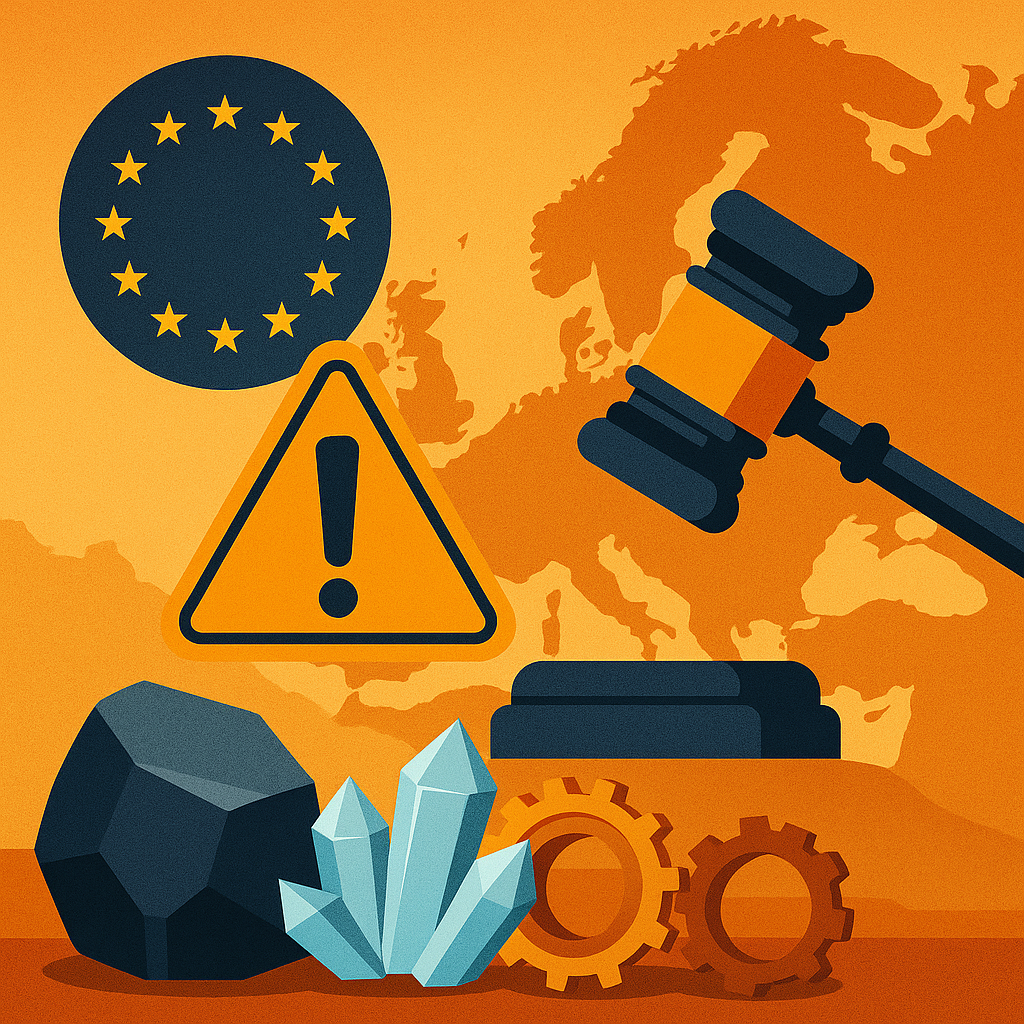Green Policy, Red Flag: Europe’s New Chemical Regulations Could Undermine Its Mineral Independence
As the global race for clean energy intensifies, critical minerals—like lithium, cobalt, nickel, and rare earths—have become the backbone of the energy transition. But just as the European Union pushes to lead the world in green tech, a controversial move from within may threaten its progress.
According to a recent report by the Financial Times, the EU is advancing chemical safety regulations that mining giants say could derail domestic development of critical minerals. The proposed classification of certain substances used in processing rare earth elements as hazardous may force European projects to shut down or never launch, pushing the bloc into greater reliance on external suppliers—chiefly China.
The clash between environmental stewardship and economic sovereignty has investors reevaluating Europe’s long-term viability as a strategic hub for metals and mining.
Europe’s Dilemma: Safety or Sovereignty?
At the heart of the issue is the EU’s planned update to its chemical safety framework, under the REACH regulation (Registration, Evaluation, Authorisation and Restriction of Chemicals). While intended to reduce public and environmental exposure to toxic substances, the legislation could inadvertently penalize industries essential to building renewable energy infrastructure and electric vehicle supply chains.
Companies like Rio Tinto and European rare earth developer Neo Performance Materials have warned that without policy exemptions or transitional support, vital refining and processing operations in the EU could become nonviable.
“Europe’s ambitions to lead in the green economy are incompatible with a regulatory regime that makes it impossible to source or process the materials required for that transition,” said one senior executive quoted in the FT.
Ironically, this could hand more leverage to China, which already controls over 85% of the global rare earth processing market (IEA, 2024).
Why This Matters for Investors
The EU’s chemical regulatory shift introduces policy risk into an already volatile sector. It undermines a central tenet of the European Critical Raw Materials Act—reducing strategic dependence on imports from non-EU countries—and calls into question the feasibility of localized mineral ecosystems.
For investors, this raises red flags across:
- Green energy supply chains: European automakers and battery producers may face rising costs or delays in securing local materials.
- Mining equities: Junior miners operating in the EU may see diminished valuations due to regulatory constraints.
- Infrastructure funds: ESG-aligned funds may need to reassess exposure to EU-based mining projects based on evolving policy.
In contrast, regions with more pragmatic or investment-friendly policies—such as Canada, Australia, and select African nations—could see increased capital inflows as investors pivot away from regulatory friction.
Key Investment Insight: Redirect Capital Where Policy Supports Growth
Europe’s policy posture toward chemicals and critical minerals may unintentionally create a capital reallocation opportunity. Investors looking to maintain exposure to the critical minerals thesis might consider:
- Diversifying geographically into jurisdictions with favorable permitting and ESG transparency.
- Tracking global supply chains that balance environmental standards with scalability.
- Following strategic partnerships: For example, U.S. and Japanese firms are rapidly securing offtake agreements in non-EU territories.
Analysts from McKinsey & Co. recently noted that “regulatory agility will become a competitive advantage in the critical minerals landscape,” and Europe’s rigidity could marginalize its competitiveness in this essential sector.
Investor Strategy Outlook
The EU’s proposed chemical rules add a layer of complexity to an already strained global supply chain. For investors, this moment underscores the importance of policy alignment in resource-based investing.
While the bloc continues to support clean energy innovation, its internal contradictions may present better opportunities elsewhere. Watching how member states, mining firms, and policymakers negotiate these competing priorities will be key in the coming quarters.
Stay Smart, Stay Informed
Track global regulatory shifts, strategic minerals trends, and resource-focused opportunities with MoneyNews.Today—your daily briefing for investor-focused, real-time insights.





